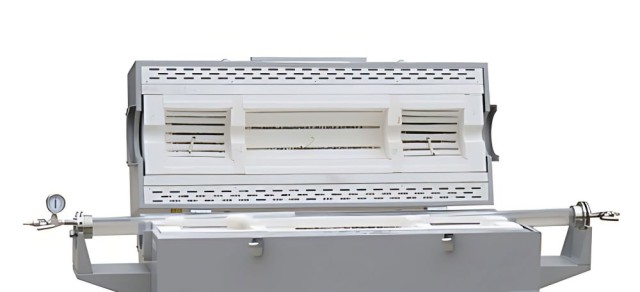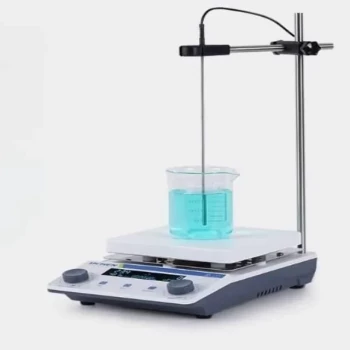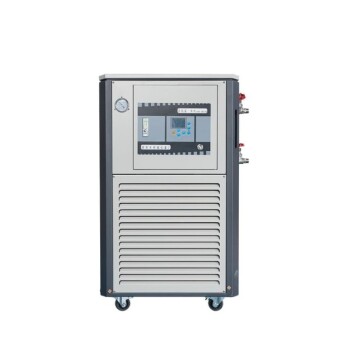Types of Tube Furnaces
Single-Temperature Zone vs. Multi-Temperature Zone
Multi-temperature zone furnaces are equipped with a significantly higher number of thermocouples and extend over much larger thermostat areas when compared to their single-temperature zone counterparts. This architectural difference is not merely about scale but also about functionality and adaptability. The additional thermocouples in multi-temperature zone furnaces allow for more precise temperature monitoring and control across different sections of the furnace. This precision is crucial for experiments that require distinct temperature gradients or varying heating conditions within a single run.
Moreover, the extended thermostat areas in multi-temperature zone furnaces enable these instruments to handle complex experimental setups that necessitate different temperature regimes simultaneously. For instance, in the growth of two-dimensional materials on substrates, these furnaces can manage temperature differences of up to 300°C between neighboring zones, facilitating the controlled deposition and growth processes. This capability is essential for advanced material science research where uniformity and precision are paramount.
In contrast, single-temperature zone furnaces, while simpler and more straightforward in design, are limited in their ability to manage such intricate temperature variations. Their smaller thermostat areas and fewer thermocouples mean they are better suited for experiments that require a uniform temperature across the entire sample. This limitation, however, does not diminish their utility in fields where constant and uniform heating is the primary requirement.
The choice between a single-temperature zone and a multi-temperature zone furnace thus hinges on the specific needs of the experiment. For larger samples or those requiring multiple temperature gradients, the enhanced capabilities of multi-temperature zone furnaces are indispensable. Conversely, for simpler experiments where uniformity is key, a single-temperature zone furnace offers a more cost-effective and straightforward solution.
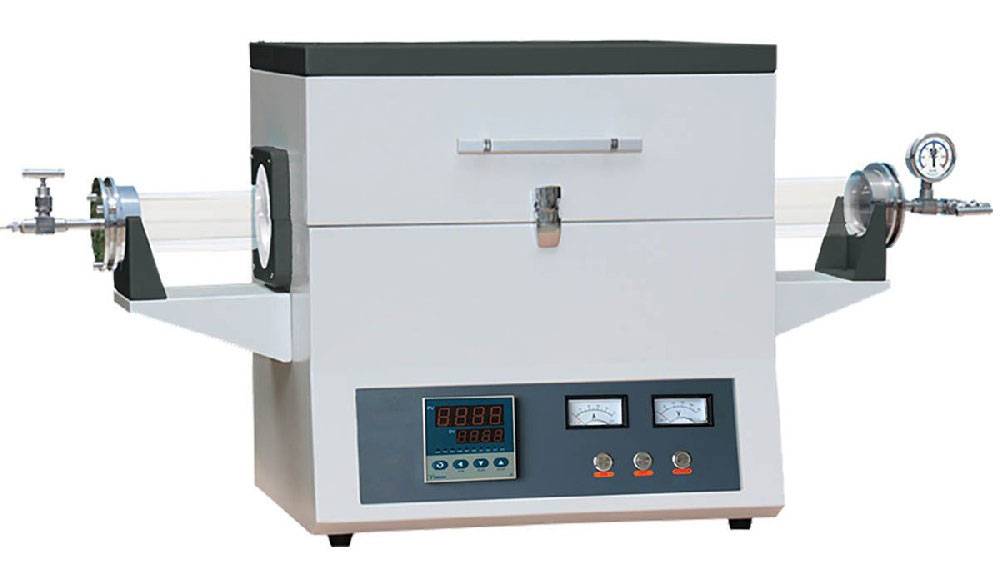
Role of Constant Temperature Zones
Definition and Function
Constant temperature zones play a pivotal role in ensuring uniform heating within a specified interval. These zones are meticulously designed to maintain a temperature difference of less than ±1℃ in the center area, which is crucial for precise experimental conditions. The uniformity in temperature distribution within these zones is achieved through advanced heating elements and sophisticated control systems, which work in tandem to minimize any fluctuations.
In practical applications, the function of constant temperature zones extends beyond mere temperature maintenance. They are instrumental in facilitating consistent chemical reactions, material transformations, and physical processes, which are highly sensitive to temperature variations. For instance, in the synthesis of high-purity materials or the growth of two-dimensional materials on substrates, the ability to maintain a steady temperature is essential for achieving desired outcomes.
Moreover, the design and implementation of constant temperature zones are influenced by the specific requirements of the experimental setup. The number of these zones can vary, impacting the overall size and capabilities of the tube furnace. For complex experiments requiring multiple temperature gradients, multi-temperature zone furnaces are employed, offering greater flexibility and control. This adaptability ensures that the furnace can cater to a wide range of experimental needs, from small-scale research to large-scale industrial applications.
Impact of Zone Changes
The number of constant temperature zones in a tube furnace can significantly influence the instrument's dimensions, often resulting in either an enlargement or reduction based on the specific experimental demands. This modification is not merely a cosmetic alteration but a strategic adjustment that directly impacts the furnace's operational efficiency and the precision of the experiments it facilitates.
For instance, increasing the number of constant temperature zones typically necessitates a larger furnace, which can accommodate more thermocouples and extended thermostat areas. This expansion is crucial for experiments requiring multiple temperature gradients or handling larger samples, as it ensures that each zone can maintain its designated temperature with minimal deviation. Conversely, a reduction in the number of zones might streamline the furnace's design, making it more compact and potentially more cost-effective for simpler, less demanding applications.
| Zone Change | Impact on Furnace Size | Experimental Implications |
|---|---|---|
| Increase | Larger furnace | Enhanced control over multiple temperature gradients, suitable for complex experiments. |
| Decrease | Smaller furnace | More compact design, potentially lower cost, suitable for simpler experiments. |
In essence, the decision to alter the number of constant temperature zones is a nuanced one, balancing the need for precision and control against practical considerations such as space, cost, and experimental complexity. Each change in zone configuration is a deliberate choice that shapes the furnace's capabilities, ultimately contributing to the success or failure of the experiments it supports.
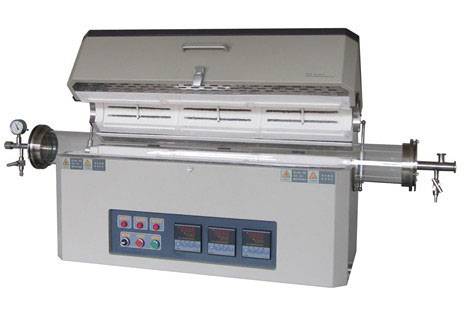
Selection Criteria for Thermostatic Zones
Sample Size and Experimental Requirements
The choice of thermostatic zones is intricately linked to both the size of the experimental sample and the volume of heat required. For experiments involving larger samples or those necessitating multiple temperature gradients, the adoption of multi-temperature zones becomes indispensable. This approach ensures that the sample can be subjected to varying temperature conditions simultaneously, thereby enhancing the experimental scope and accuracy.
For instance, in applications such as the growth of two-dimensional materials on substrates, the use of multi-temperature zones is particularly beneficial. These zones allow for a controlled temperature differential, often up to 300°C between neighboring zones, which is crucial for facilitating physical deposition and substrate growth. This method not only streamlines the process but also ensures uniformity and precision in the material's growth.
Moreover, the selection of the appropriate number of thermostatic zones can significantly impact the overall efficiency and effectiveness of the experiment. For larger samples, the need for more zones arises to manage the heat distribution effectively, preventing hotspots and ensuring an even temperature gradient across the sample. This meticulous heat management is essential for achieving consistent and reliable experimental outcomes.
In summary, the decision regarding the number and configuration of thermostatic zones should be guided by the specific requirements of the experiment, with a particular focus on sample size and the necessary temperature gradients. This strategic selection ensures that the experimental setup is optimized for both performance and precision.
Application Example
In processes such as the growth of two-dimensional materials on substrates, the utilization of multi-temperature zones within tube furnaces plays a crucial role. These zones are strategically designed to accommodate significant temperature variations, with a maximum temperature difference of up to 300°C between adjacent zones. This gradient is essential for facilitating physical deposition and promoting the uniform growth of the substrate.
For instance, in the synthesis of graphene on copper substrates, the temperature zones are calibrated to maintain specific thermal gradients. The initial zone, set at a lower temperature, preheats the substrate, while the subsequent zone, at a higher temperature, triggers the chemical reactions necessary for graphene formation. This dual-temperature approach ensures that the substrate undergoes a controlled transition, enhancing the quality and uniformity of the deposited material.
Moreover, the application extends to other advanced materials like transition metal dichalcogenides (TMDs). Here, the temperature zones are adjusted to simulate different growth stages, from nucleation to full crystallization. This methodical temperature control not only optimizes the growth process but also allows for the exploration of various material properties by fine-tuning the thermal environment.
In summary, the implementation of multi-temperature zones in tube furnaces is indispensable for the precise and efficient growth of two-dimensional materials. By leveraging these temperature gradients, researchers can achieve superior control over the deposition process, leading to higher-quality materials with tailored properties.
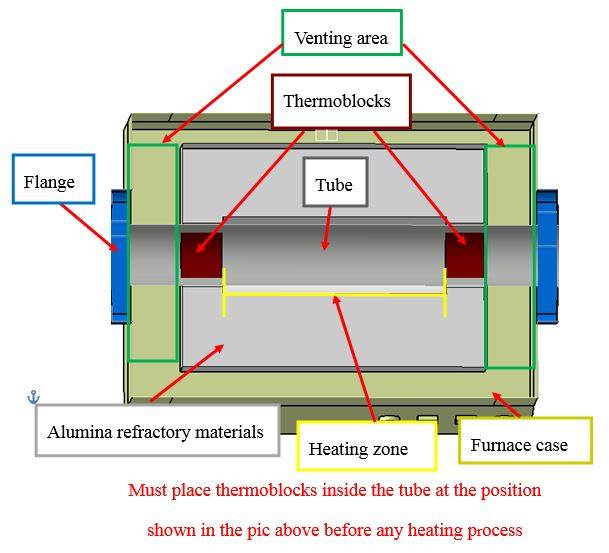
Heating Zone vs. Constant Temperature Zone
Difference and Implication
The constant temperature zone (CTZ) in a tube furnace is inherently smaller than the total heating zone, which presents a critical consideration when selecting the appropriate heater. This discrepancy arises because the CTZ is designed to maintain a uniform temperature within a specific interval, typically with a temperature difference of less than ±1℃ in the central area. However, the total heating zone encompasses a broader range, often necessitating a larger heater to accommodate the experimental setup.
To ensure accurate and consistent results, it is imperative to choose a heater whose CTZ exceeds the dimensions of the sample being processed. This ensures that the sample remains within the uniform temperature range, thereby minimizing thermal gradients and potential experimental errors. For instance, in applications such as the growth of two-dimensional materials on substrates, where precise temperature control is paramount, selecting a heater with an appropriately sized CTZ is crucial for facilitating successful physical deposition and substrate growth.
In summary, while the CTZ is a critical component for maintaining uniform heating, its smaller size relative to the total heating zone necessitates careful consideration when selecting heating equipment. This selection should be based on the sample size and the specific experimental requirements, ensuring that the heater's CTZ is sufficiently large to accommodate and maintain the desired temperature uniformity across the sample.
Related Products
- Multi Zone Laboratory Quartz Tube Furnace Tubular Furnace
- Rotary Tube Furnace Split Multi Heating Zone Rotating Tube Furnace
- Vertical Laboratory Quartz Tube Furnace Tubular Furnace
- 1400℃ Laboratory Quartz Tube Furnace with Alumina Tube Tubular Furnace
- 1700℃ Laboratory Quartz Tube Furnace with Alumina Tube Tubular Furnace
Related Articles
- Comprehensive Guide to Tube Furnaces: Types, Applications, and Considerations
- A Comprehensive Guide to Split Tube Furnaces: Applications, Features
- The Versatility of Tube Furnaces: A Guide to Their Applications and Benefits
- Introducing the Lab Vacuum Tube Furnaces
- Exploring Rotary Tube Furnaces: A Comprehensive Guide
